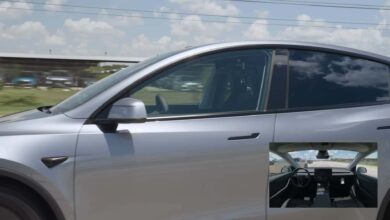100,000 EVs Will Retire This Year. What Will Happen To Their Batteries?

- Even after years of use, electric vehicle batteries tend to have lots of usable capacity for different use cases.
- Battery recycling company Redwood Materials said EV batteries can be repurposed into stationary energy storage systems before getting recycled.
- Such systems can help stabilize the electricity grid and help countries move away from fossil fuels.
Electric vehicle sales have been rising rapidly over the past decade, and many of those used EVs are now approaching the end of their lifespans. That may seem like a bunch of them are going to end up in some landfill, but EVs aren’t like gas cars.
An older, high-mileage EV becomes a prime candidate for the recycling and recovery of critical materials from its battery, repurposing them into “second-life” use cases—think stationary energy storage—that will extend their value and contribute to the battery circular economy.
Redwood Materials, a battery recycling company spearheaded by former Tesla executive JD Straubel, is leading North America’s battery recycling and repurposing industry. The company said in a blog post on Friday that it was receiving 20 gigawatt-hours of batteries annually, equivalent to 250,000 EVs. It now accounts for 90% of all lithium-ion batteries and material recycling in all of North America.
It’s why the company is launching Redwood Energy: a new division devoted to turning old EVs into modular energy storage systems (ESS). Redwood Energy will be focused on the commercial space for now, unlike, say, Tesla’s home Powerwall setups.

EV Battery Circular Economy
Photo by: IDTechEx
It works because many of these batteries have more than 50% of their original usable capacity, meaning they’re still valuable for second-life use cases, according to the company. That makes them suitable for ESS, which are emerging as the second home for these used EV batteries.
The booming ESS market is timely. Energy-hungry data centers powering our ChatGPT searches and AI networks are straining the grid and have kick-started a new search for alternative energy sources. Redwood says ESS powered by these recycled batteries can reduce the burden on the grid. They also prevent the spillage of harmful chemicals into the environment.
Repurposing these batteries can happen at multiple stages; at the pack, module, or cell levels, according to U.K.-based research firm IDTechX. The deeper the battery disassembly, the steeper the costs of repurposing. But going all the way to the cell level also allows companies to pick out the best-performing cells and then create a second-life battery system using them.

Tesla’s 4680 battery cells used on the Cybertruck and Model Y.
After Redwood recovers the packs, it safely stores them before testing. They then undergo diagnostic tests to determine if the battery needs to be recycled or whether it can be put into second-life use. The packs that still have meaningful energy capacity are then converted to energy storage batteries, regardless of which company originally made them or the chemistry of the cells.
They then go on to their second use, which could involve independent energy storage systems for a household or commercial use, like supporting AI data centers. They could even be powered by solar or wind energy in rural areas where the EV charging infrastructure tends to be less developed, but still enable homes in those areas to drive EVs regularly—the EV battery can be charged by the stationary energy storage systems.
Car buyers in the U.S. purchased a record 1.3 million fully electric and plug-in hybrid vehicles last year, a 7.3% increase from the year before. Which means hundreds of gigawatt-hours of batteries will approach the end of their life in the coming years. The ESS market won’t necessarily be constrained by supply, but by how fast and effectively those batteries are repurposed and put back to use.

Photo by: Redwood Materials
More than 100,000 used EVs will come off the U.S. roads this year alone, the company estimates, and that number is expected to continue growing over the coming years. Still, the recycling industry, where some critical materials are recovered and then put back into the supply chain to make all new batteries, is expected to grow much faster than the repurposing industry, IDTechX projected.
The global battery recycling market is expected to be worth $52 billion by 2045, whereas the second-life battery industry is forecast to reach $5.2 billion by 2035.
Have a tip? Contact the author: suvrat.kothari@insideevs.com
Source link

